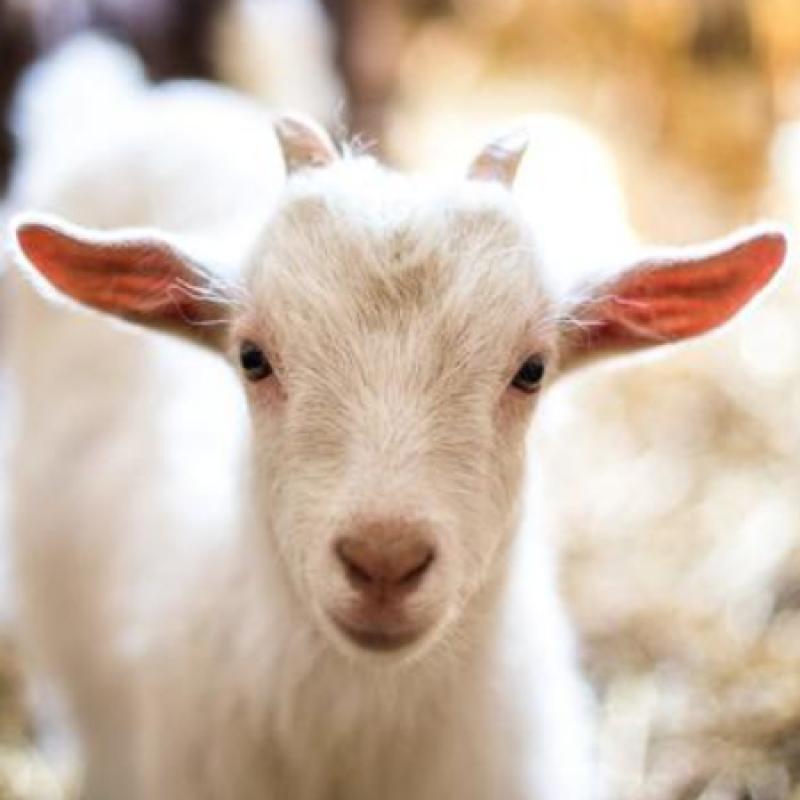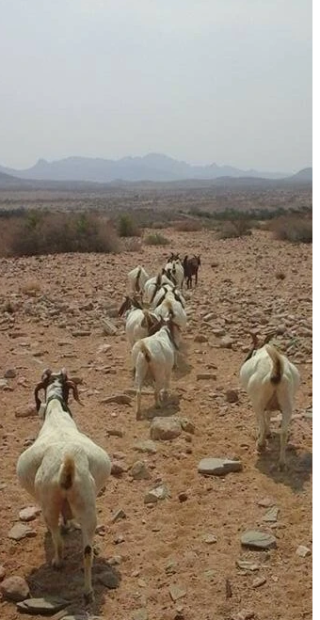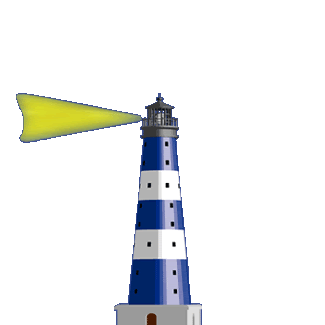Goats Don't Vote
By: Veronique Greenwood


While some animals that rove in groups appear to cast a form of ballot about directions, goats mostly copy each other.

One decides and moves out.
The others follow without thought.
Any ressemblance with Trumpists is fortuitous.


Not pictured: Democracy in action
Zoran Marinovic for The New York Times
One moment a herd of goats is milling around, casually browsing the scrubby grass. The next, their long ears twitch and their wide golden eyes stare as they trot off purposefully, picking up speed as they appear to rush intently to a specific destination. They're exhibiting a behavior that scientists have long watched in herding, flocking and schooling animals from baboons to fish.
It almost looks like the goats have cast their votes and decided together which way to go.
How creatures in the animal kingdom come to a decision together is a subject of perennial interest. Among some species, individuals do weigh in. Members of meerkat troops make calls and African wild dogs sneeze before the group moves, and they will only set off when enough individuals have had their say.
It's even been posited that African buffalo vote with their movements, with animals pointing themselves toward the way they want to go and the herd choosing the average of all their directions.
It's difficult, however, for a human observer to tell the difference between forays directed by silent voting and ones where animals copy whatever their closest compatriots are doing, the way schooling fish do. Using collars equipped with GPS and other sensors, biologists watched a small herd of Namibian goats to see if their behavior suggested one tactic or the other. In a paper published Wednesday in the journal Royal Society Open Science, they report that the goats do not seem to be voting.

"If you just sat in the field with a notebook, you couldn't do it, because you don't know when they're going to leave," he said.
Goats in Namibia with GPS trackers in the
Tsaobis Nature Park.
Lisa O'Bryan
He and his colleagues have developed collars containing GPS equipment as well as accelerometers and magnetometers that track which way animals are facing, when they start to move together and where they finally end up. They put the collars on 16 domesticated goats at the Tsaobis Nature Park in Namibia and collected data as they roamed over 10 days. With this information, they could backtrack to just before the group left a given location and determine which moment they turned to face their destination.
If voting were happening, the goats would orient themselves before the movement began. A majority might face the direction they eventually move in, or the direction might be an average of their positions. In each situation, there would be a delay before the goats acted on the decision.
Instead, what the researchers saw was that the goats did not start facing their destination until the very moment they were leaving. That implied that one goat would start moving, its nearest neighbors would turn to follow it, and their nearest neighbors would do the same, a behavior the researchers call copying. That meant that the goats' orientation before a foray did not predict which way they ended up going.
The researchers also built a computer model to simulate what the goats' movement would look like if they were voting versus merely copying. Some virtual goat herds were programmed to copy their neighbors, while others voted with their positions. The researchers found that what the goats did in real life looked a lot more like the copycat herds, suggesting that the animals do not need to do anything more than mimic their companions to move as a group.
Behavior that emerges from very simple rules can be surprisingly complex. Goats may not be having discussions — at least, not that scientists saw in this study — but that doesn't mean that their ways of moving together aren't flexible or useful. If more research confirms that they are moving by copying, it could indicate that mimicking neighbors may improve survival in a herd.




Let's not jump to any conclusions...
The one goat seems to have a shit eating grin. He is adorable. Trump has mindless and soulless lemmings, not goats. Goats serve a purpose, lemmings don't.
Butt, butt that's what they do..